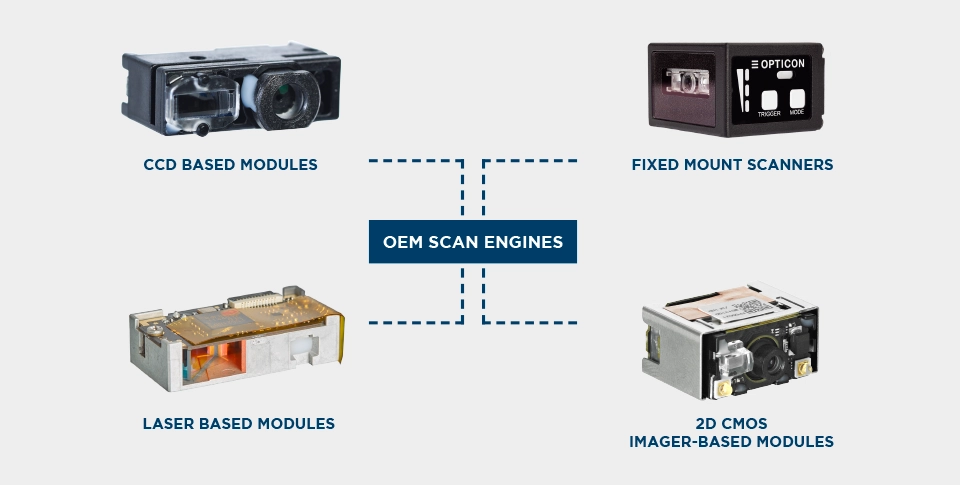CCD based modules
How does it work
CCD modules are linear (1D) scan modules. They consist of a CCD sensor, which is basically a camera with one row of pixels, electronics to amplify the signal coming from the camera and a processor that decodes the signal and outputs the decoded data via a serial interface.
The CCD module has a built-in LED that illuminates the target barcode. This light is reflected and captured by the CCD sensor which converts the light into an electronic signal. That signal is then amplified and fed to a microprocessor which decodes the signal.
A schematic view of this process is as below:
![]()
An overview of the various components in a CCD module is shown below. The module has an illumination LED that lights up the target barcode (ambient light can also be used although only the red part of the light spectrum is used). The CCD sensor in the module ‘looks’ at the illuminated barcode through a small lens and captures one single line of the barcode. This line of pixels is then output as an analog signal, filtered and digitized by comparing it to a threshold level.
![]()
The resulting digital signal is then processed by a microcontroller which decodes it and subsequently transmits the decoded characters over a USB or serial interface.
Advantages of CCD modules are:
- Extremely rugged since there are no moving parts
- Cheap due to the relatively simple construction
- Small
- Low power consumption
Disadvantages of CCD modules are:
- Limited depth of field
- Less suitable for high-resolution labels
- Cannot read 2D codes
Quick Scan
CCD based modules
Filter products
1D or 2D
Product Communication interface
Product Selector
Which OEM scanning product is best for you?
Use our product selector to explore which OEM Module or Fixed mount scanner is right for you.
